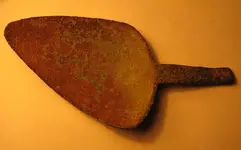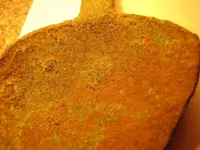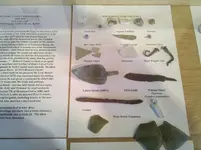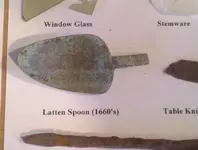BobinSouthVA
Bronze Member
- Joined
- Mar 1, 2007
- Messages
- 1,655
- Reaction score
- 107
- Golden Thread
- 0
- Location
- SE Virginia
- Detector(s) used
- Minelab Explorer SE Pro / Whites Prism II
Well this isn't exactly todays find, however I did find it a few years ago. Funny thing is I didn't think much about it at the time, and it ended up in my truck door.
fast forward to this weekend. We had the kids at York River State Park to take a hike. While the kids were on the swings and the wife was watching the dog, I took a peak inside the visitors center. They had relics on display from the plantation digs in the area, lo and behold there was the same looking piece I had found. I never thought it was a spoon since the cut looked intentional. I assumed there was some other use. Who knows maybe the cut was intentional, it seems pretty straight.
However I cannot make out the maker engraving in the bowl, so I may not be able to date it properly. Here are the marks I'm trying to compare it against.
http://tinyurl.com/4vh976a
Thanks for looking and HH.
fast forward to this weekend. We had the kids at York River State Park to take a hike. While the kids were on the swings and the wife was watching the dog, I took a peak inside the visitors center. They had relics on display from the plantation digs in the area, lo and behold there was the same looking piece I had found. I never thought it was a spoon since the cut looked intentional. I assumed there was some other use. Who knows maybe the cut was intentional, it seems pretty straight.
However I cannot make out the maker engraving in the bowl, so I may not be able to date it properly. Here are the marks I'm trying to compare it against.
http://tinyurl.com/4vh976a
Thanks for looking and HH.
Attachments
Upvote
0






 willy
willy

